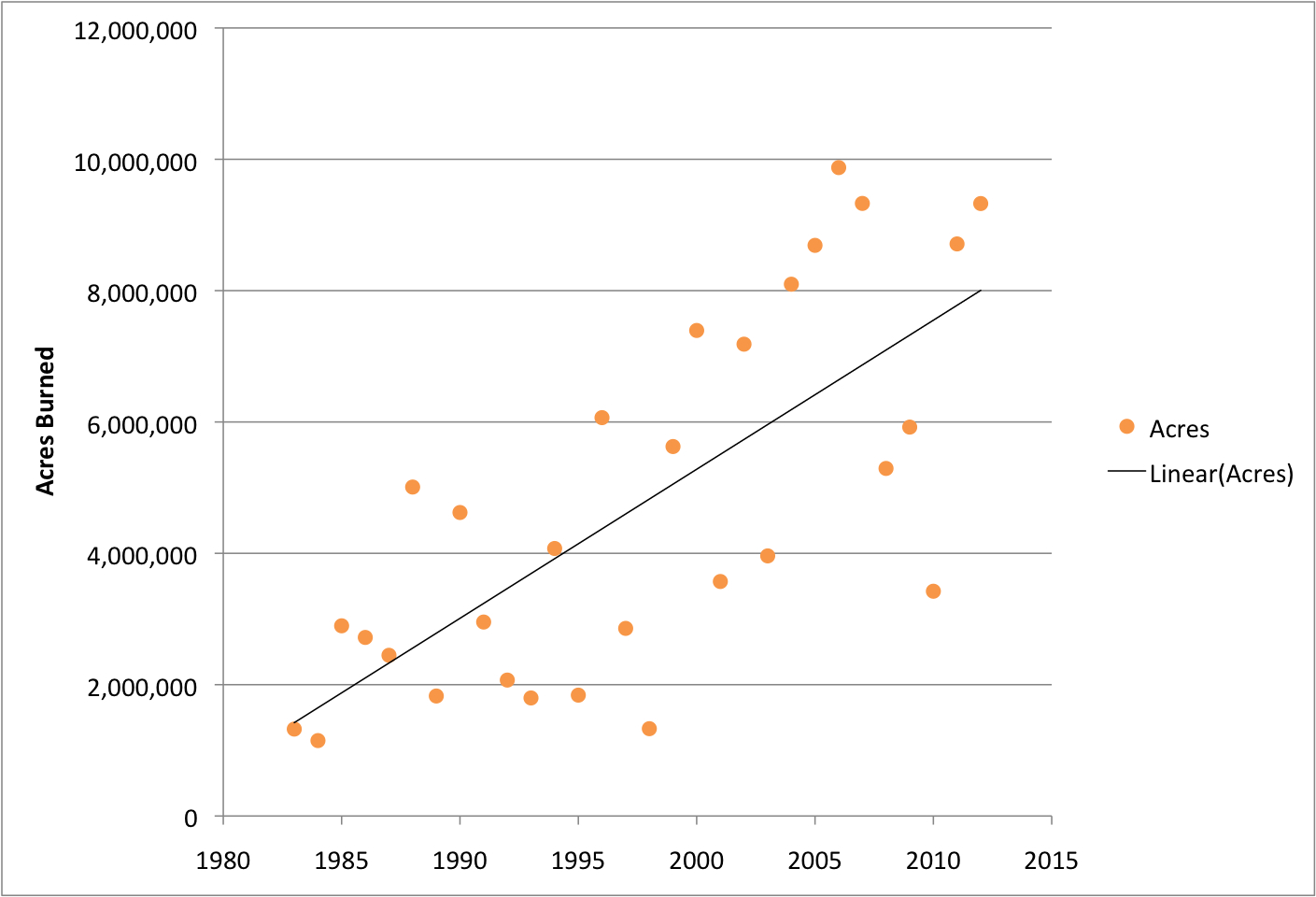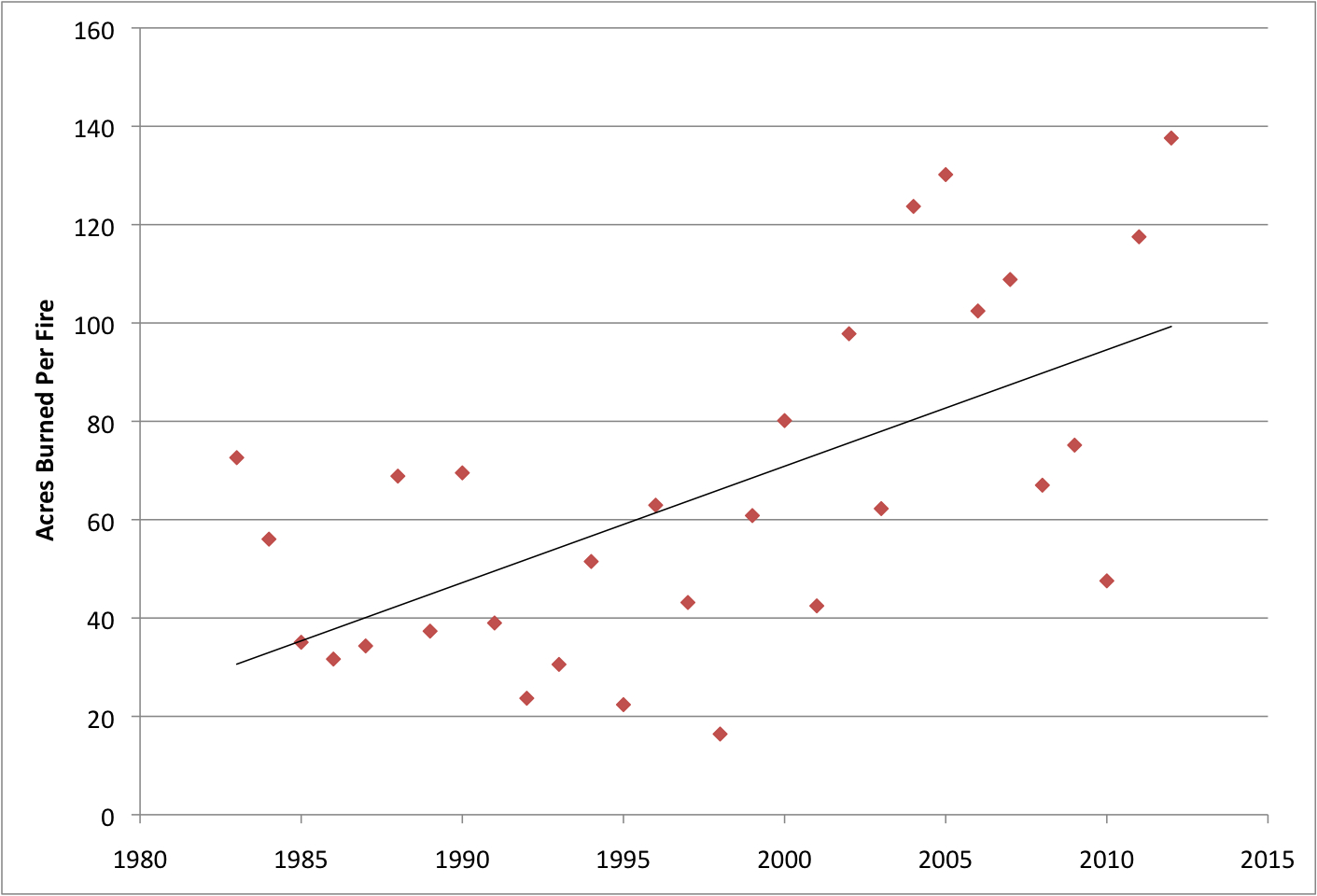Judee Burr
Policy Analyst
Small fires at regular intervals have long been a regular occurrence in California and are necessary to keep forests healthy. Large blazes like the Rim Fire, however, are the result of years of fires that failed to happen. Combined with the effects of rising global temperatures, California is facing a greater likelihood that fires will break out and grow out of control.
Policy Analyst
Large wildfires scorching the American West have made national headlines this year—from the tragic Yarnell Hill Fire in Arizona that killed 19 firefighters to the record-breaking Rim Fire that is still burning through Yosemite. The deaths and destruction caused by these enormous blazes make them seem like extraordinary disasters. But here in California and throughout the American West, big fires are happening more and more frequently—especially as global warming makes the American West more prone to drought.
Data from the National Interagency Fire Center (Figure 1) show that the number of acres burned in wildfires is on the rise. The data also show that there is a trend of larger and larger fires (See Figure 2).
Figure 1: More Acres Are Burning in the United States

Figure 2: Fires Are Getting Bigger

In fact, fires are now burning through twice as many acres per year as they were 40 years ago, according to Thomas Tidwell, Chief of the U.S. Forest Service. This means every year, our land is burning in large wildfires that are more difficult to control – putting our ecosystems, homes, and lives in danger.
The Rim Fire is a stark example of this trend. It is the third largest wildfire in California history, now spanning an area more than 8 times the size of San Francisco and only 80 percent contained by firefighters as of September 10. Massive wildfires like this one are a disaster—for our national parks, our homes, and our strained California budget. The Rim Fire has burned through thousands of acres of Yosemite National Park, the nation’s third-largest national park that contains over 400 animal species, 800 miles of hiking trails and groves of Giant Sequoia trees. The Forest Service is still assessing the damage that the fire has done to Yosemite National Park.
The Rim Fire is also endangering the lives and property of Californians. As of Wednesday, August 28, more than 110 buildings, including 11 homes, had been destroyed by the wildfire. At the peak of the fire, over 5,000 firefighters were risking their lives to contain the blaze. The cost of the fire has grown to over $100 million, and California has spent a quarter of its yearly fire-fighting budget in the first seven weeks of the fiscal year.
Small fires at regular intervals have long been a regular occurrence in California and are necessary to keep forests healthy. Large blazes like the Rim Fire, however, are the result of years of fires that failed to happen. Combined with the effects of rising global temperatures, California is facing a greater likelihood that fires will break out and grow out of control. National Geographic reports on this trend of drier climates leading to larger fires in the American West—California is experiencing the driest year on record in 2013 and Arizona’s average 10-year temperature has increased by 2.3 degrees F.
As we reported earlier this year, large fires and other forms of extreme weather are a growing threat to our personal and environmental health. Global warming is making extreme weather events—from hurricanes to downpours—more severe and dangerous nationwide. In order to combat this trend, we need to take action now to mitigate the threats of global warming. This means:
This record-breaking fire in Yosemite should be more than enough to ignite some important changes in public policy that will limit our contribution to global warming and help mitigate this trend of worsening extreme weather events.
Policy Analyst
